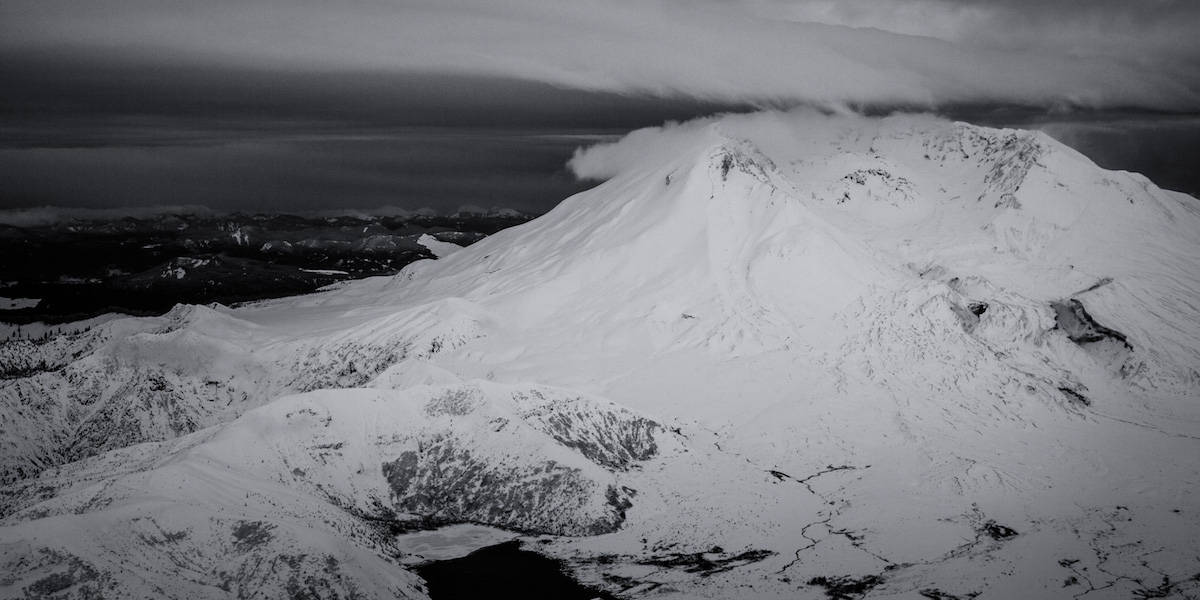Mount Saint Helens is the perfect balance. With easy access and over a 5,000 vert descent it offers great turns when in corn conditions. Though it receives a huge amount of snow it is usually accompanied by wind. This means that a powder day from top to bottom is rare. Knowing that this is one of those places you go to for corn skiing. The two most popular routes are Monitor Ridge and the Worm Flows. Having done both of them we decided to head back towards the Worm Flows. The plan for the season was to ride the 25 main volcanoes in the Cascades Range and this would be the first.
Heading South for a Descent of Mount Saint Helens in January
After a not so eventful Saturday riding the groomers at Crystal Scott, Dan and I made plans to climb Mount Saint Helens. It was a early morning waking up at 3:15 AM so I could pick up Dan in West Seattle and make it to Tacoma to meet up with Scott by 5:00. Leaving Tacoma at 5:45 we arrived at the Marble Mountain Sno-park by 9:00. The parking lot had quite a few cars and there was a lot of activity. It seemed that people were either snowshoeing or boot packing but it seemed everyone had the plan to climb Mount Saint Helens. It was still early January but a warm front had hit the Cascades. Our hopes was that we could find a rare corn snow day in January.
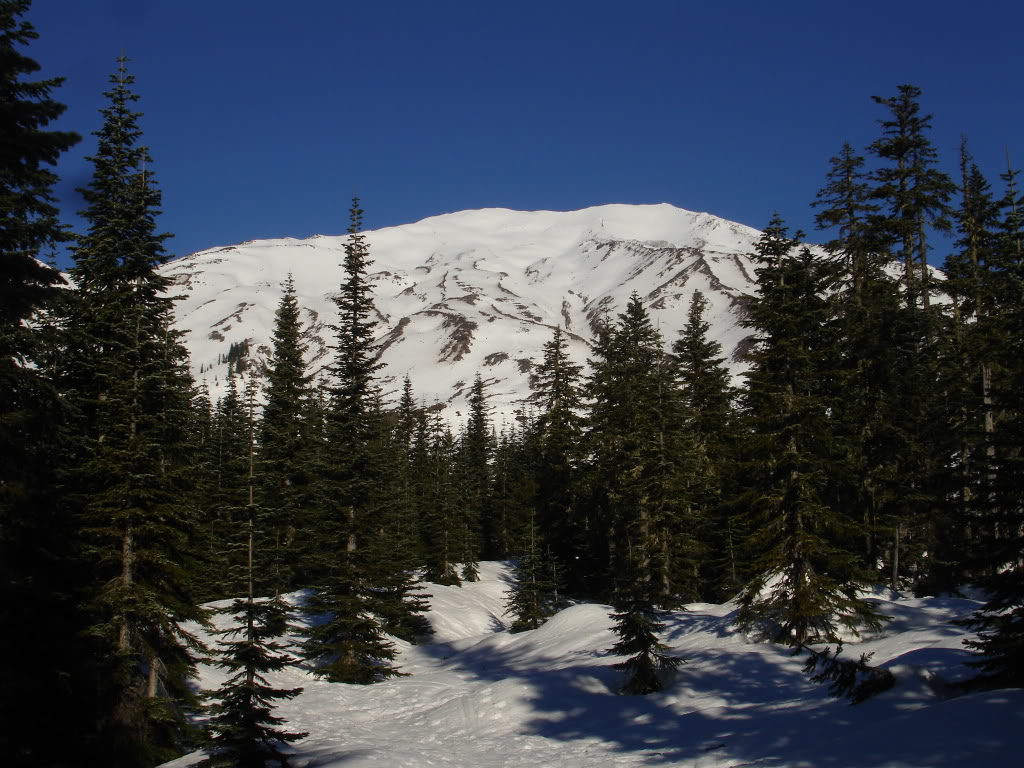
Leaving the Marble Mountain Snowpark it wasn’t long before we were standing at the base of Mount Saint Helens. Above us was a straight forward route all the way to the Crater Rim. Though the ridges were bare of snow the gullies were filled with a deep snowpack.
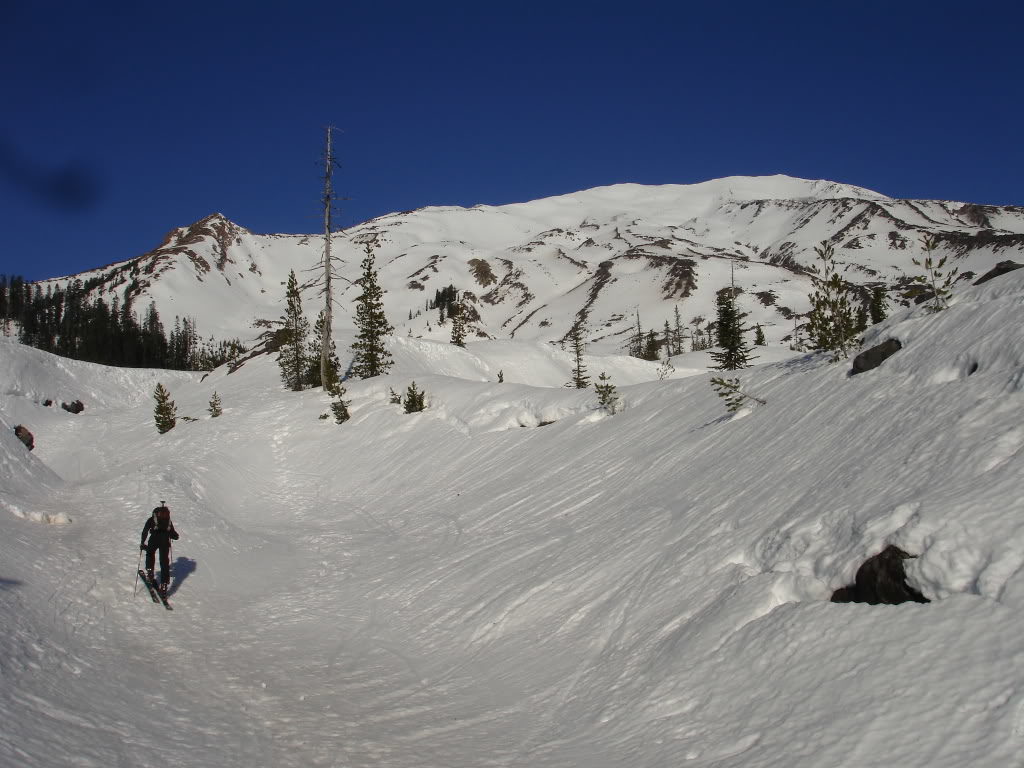
As we made our way to the edge of tree line the winds quickly picked up. Though it was a warm day the snow had stayed firm and each step was a challenge. As we climbed we made sure to stay off any sidehilling terrain. We would need the full surface of our skins on the snow to not slip out. Fortunately for the most part the terrain was quite mellow.
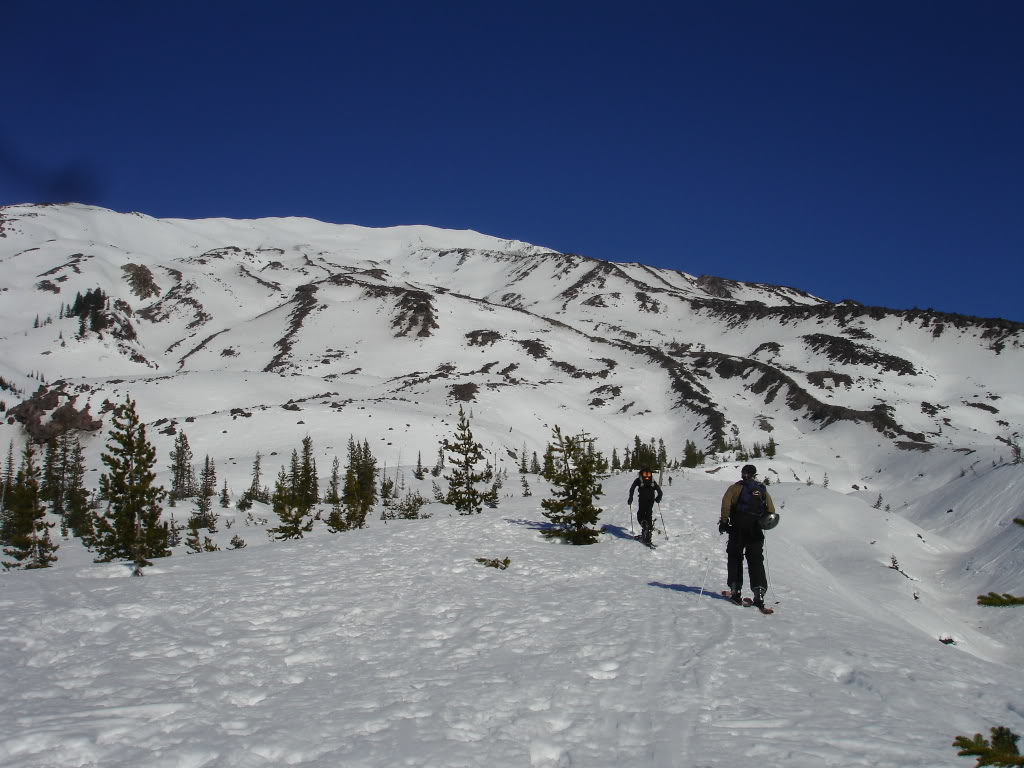
Heading up the Worm Flows Route in a Thin Snowpack
Making our way up we had a clear view of Mount Adams to the east. Though it was still only January the volcano was covered in what seemed to be a healthy snowpack. Being low on the mountain we were surprised by how little snow we were dealing with. We would have to be careful with our descent route if we didn’t want to hit any rocks.
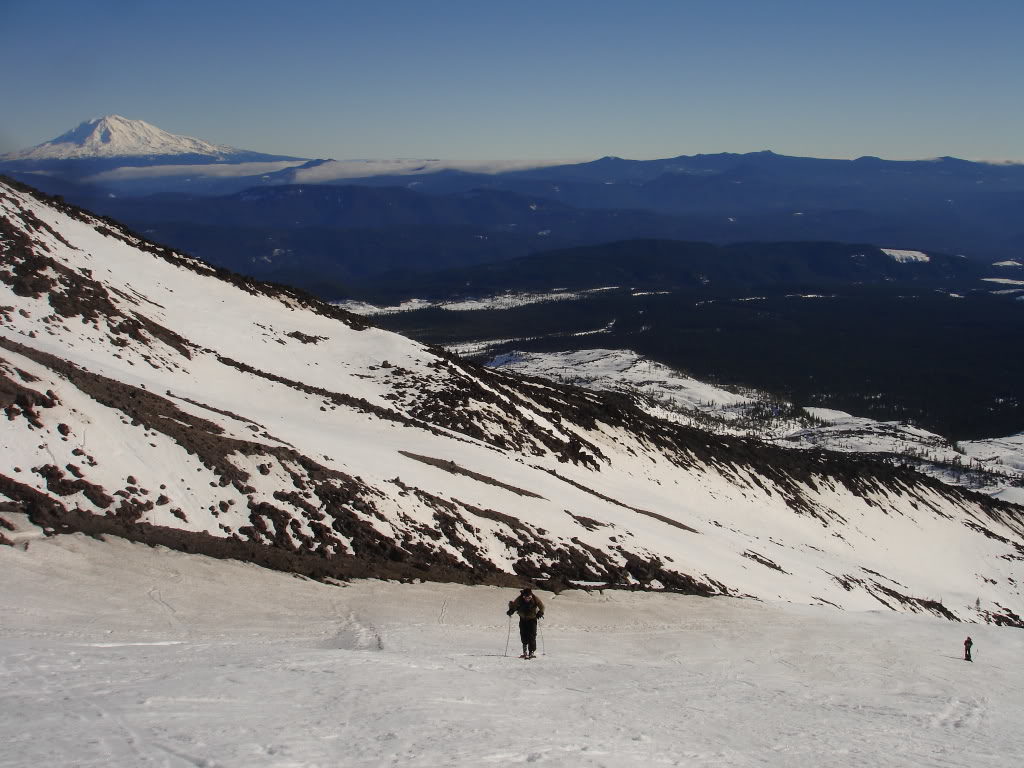
With the route up Mount Saint Helens being straightforward we quickly gained elevation. The higher we ascended the stronger the winds were. We had expected to find corn snow but it was still just before noon and still firm. Though we feared we wouldn’t get good turns at least we had clear views. To our south Mount Hood rose above the surrounding mountains rising over 5,000 feet.
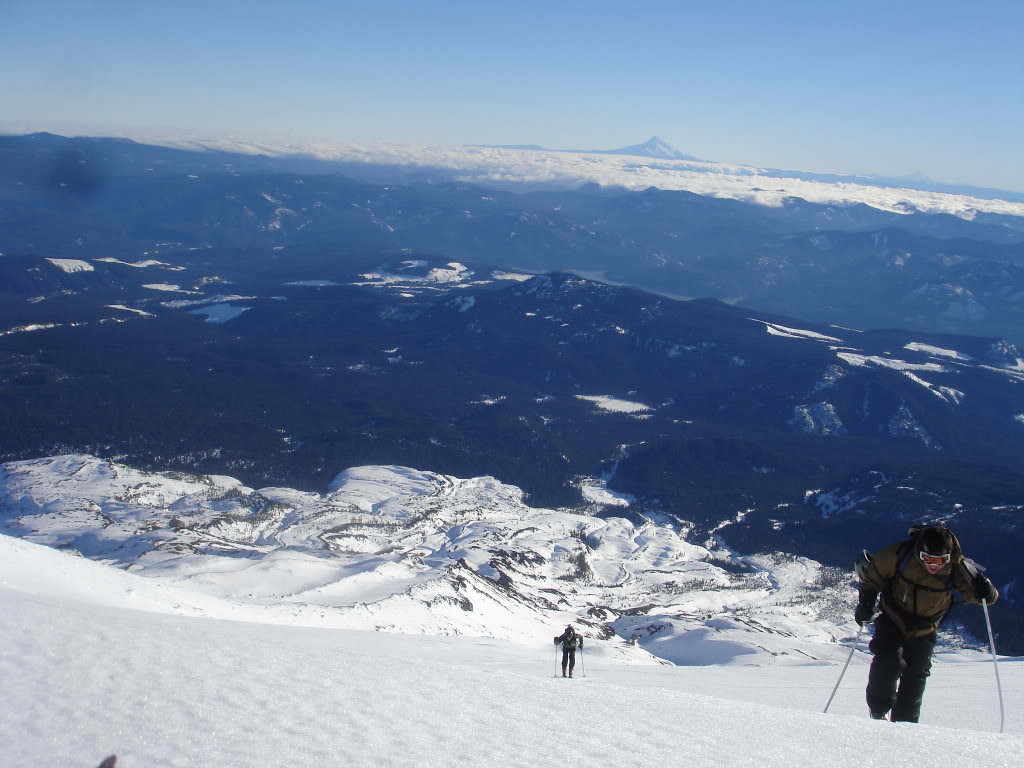
Arriving on Mount Saint Helens Crater Rim
Soon enough we were standing on the crater rim and taking in the views. We had made our way up in less then 4 hours and decided to wait in hopes the snow would soften. We would have to be careful as we made our way over to the Crater. Instead of walking over on the snow we spotted some rocks before heading over to check out the terrain to the north.
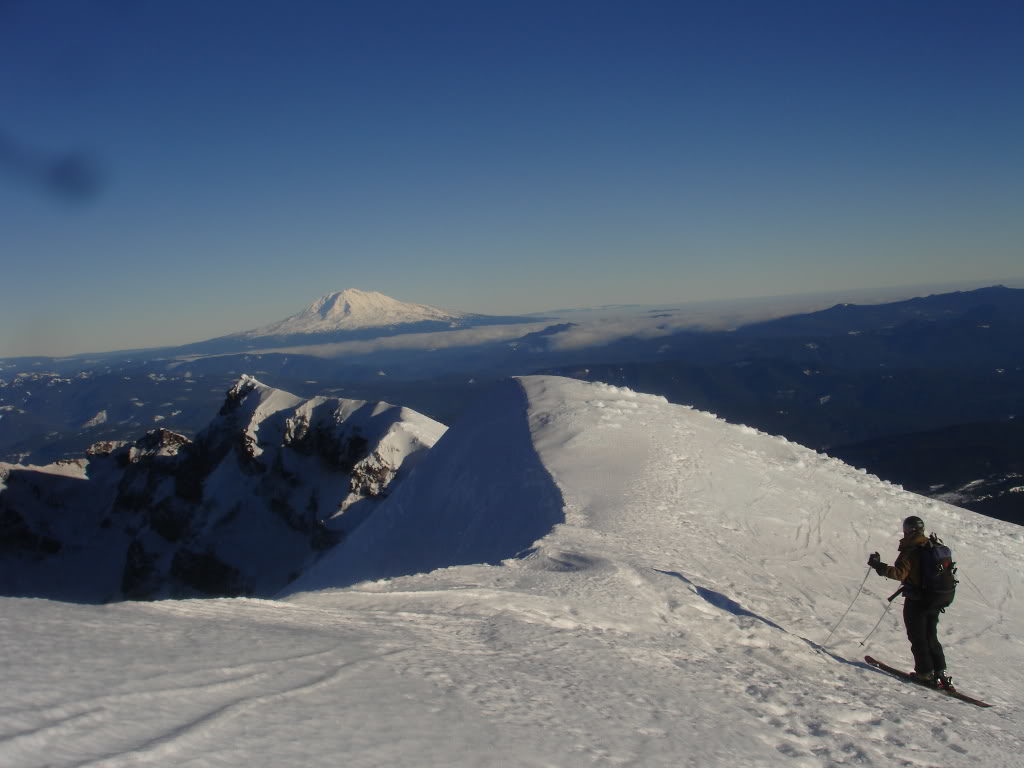
Walking to the edge we had a clear view of the Spirit Lake Area. Though it was Winter the lake had still not frozen over and the surround terrain had a thin snowpack. Far to the north Mount Rainier and it’s south side stood out with a thick snowpack while in the devastation zone there was little to no snow to be found.
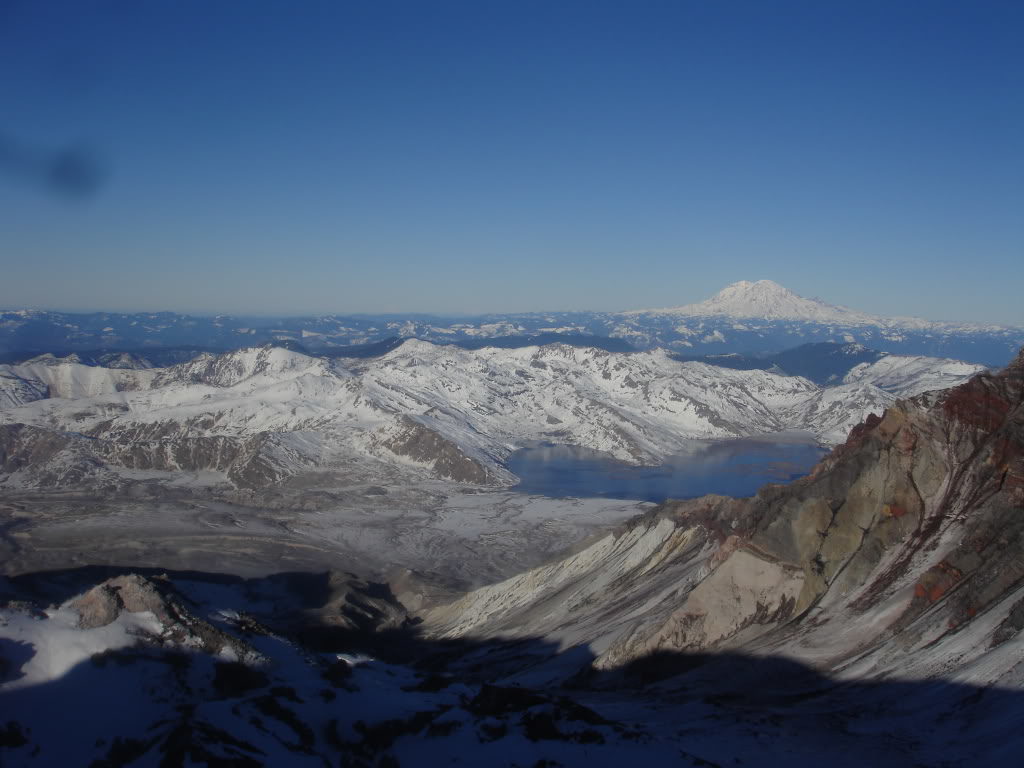
Inside the Crater Rim it seemed that none of the chutes into the crater were in. Everything was covered with rocks and we could barely make out the glare of ice. If we thought our route down the south face was bad this area was 10 times worse.
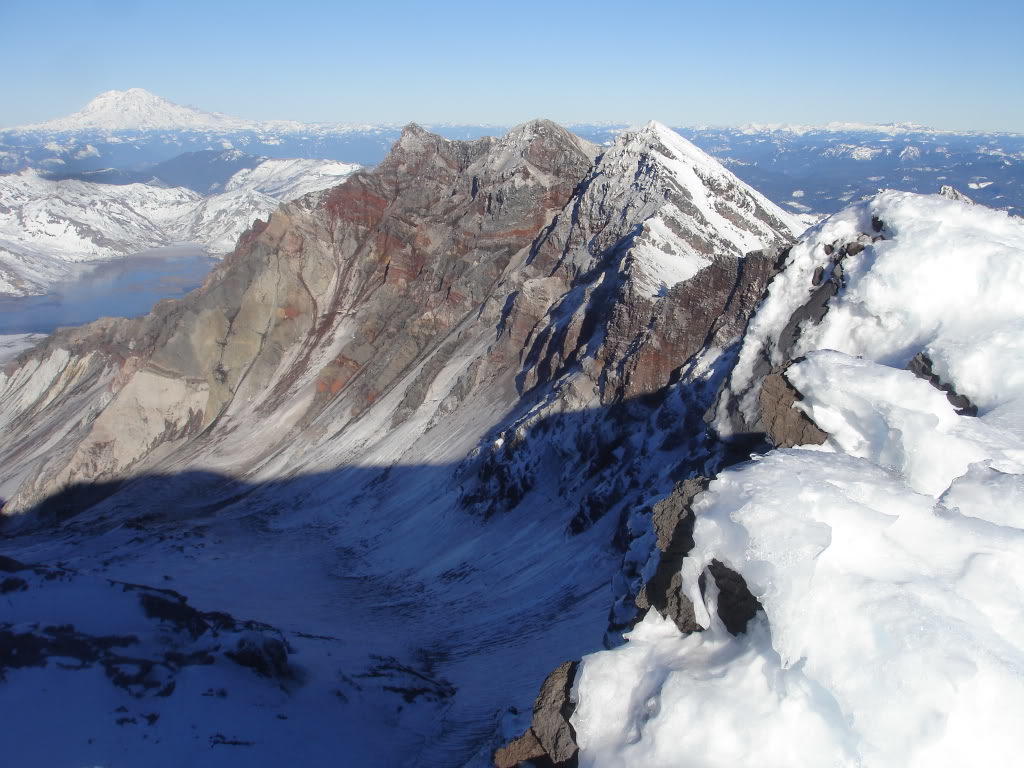
Transitioning was the hardest part of the day as the winds on the Summit of Mount Saint Helens were strong. As we hunkered down we made sure our gear wouldn’t blow away. A skin at a time we put our gear into our backpacks and made sure to hold onto everything. The last thing we wanted was to loose our gear and watch it descend down the south face.
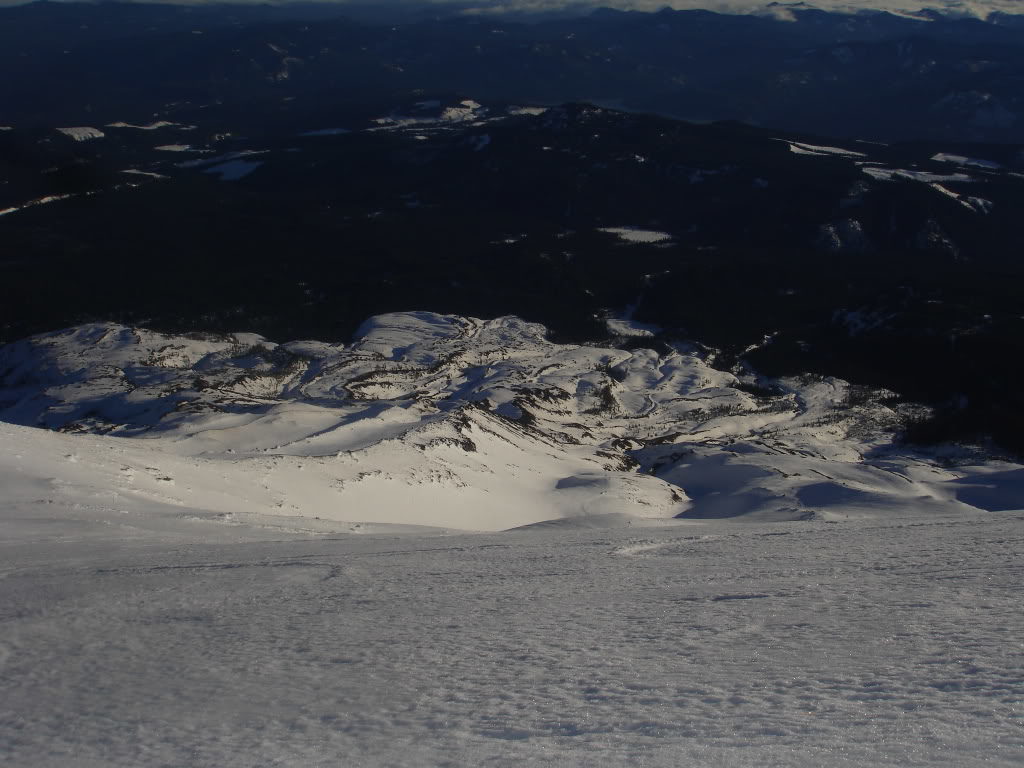
Descending Mount Saint Helens in Firm Conditions
Within the first few turns down Mount Saint Helens we knew it would be bad. Though edgeable it was still brutally firm and not the type of terrain you want to fall on. Though we had made a gamble to head there in January we had not payed attention to the winds. It was a warm day but the constant air flow wouldn’t allow the area to soften up.
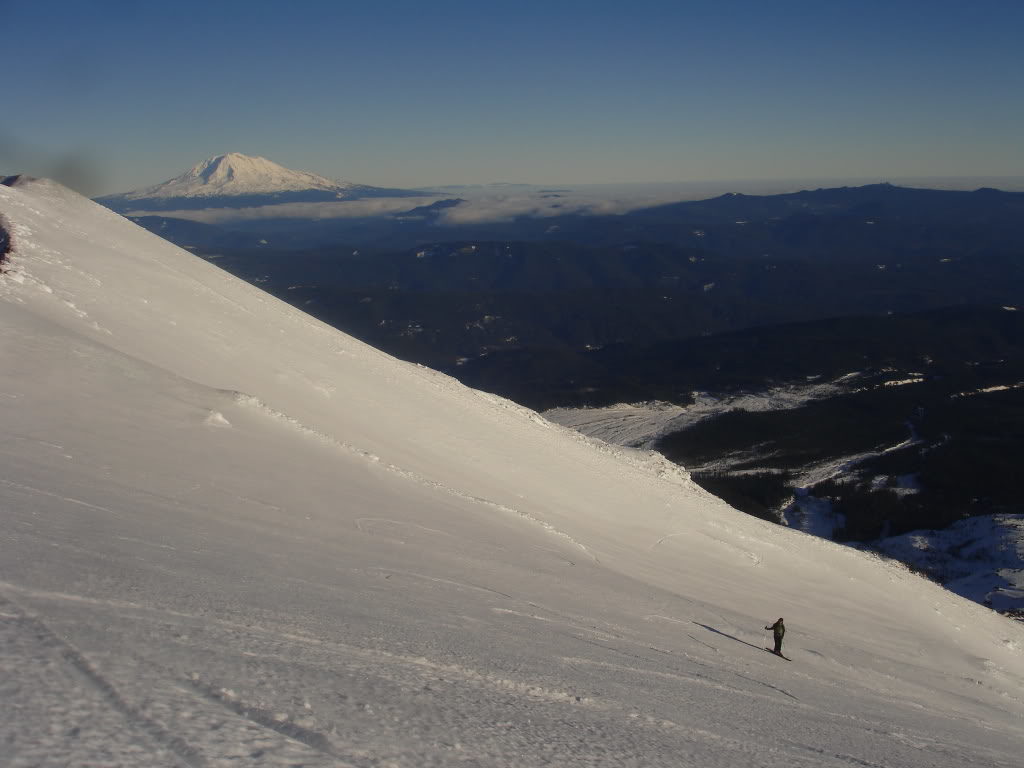
After chatting a bit about the conditions we knew there were no aspects that would give good snow. We had lost the gamble but at least our descent would be fast and smooth. Instead of focusing on photos instead we would survival ski our way down and hopefully lower the snow would improve.
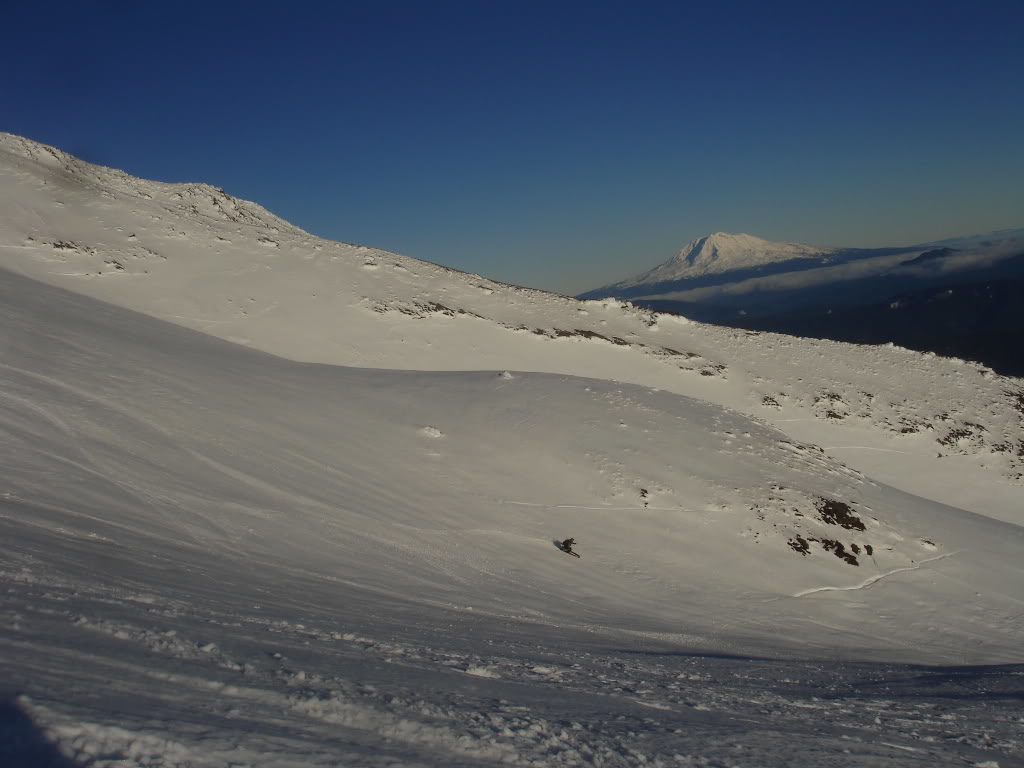
On the lower slopes of the Worm Flow route the snow did get softer. The problem was that it was far from smooth as we made our way back towards Marble Mountain Snowpark. By now it was getting later in the day and some areas were starting to see shade. Instead of dropping into a shaded gully we decided to stick up on a high ridge. As long as we stayed in the middle we wouldn’t hit rocks and could see the terrain below.
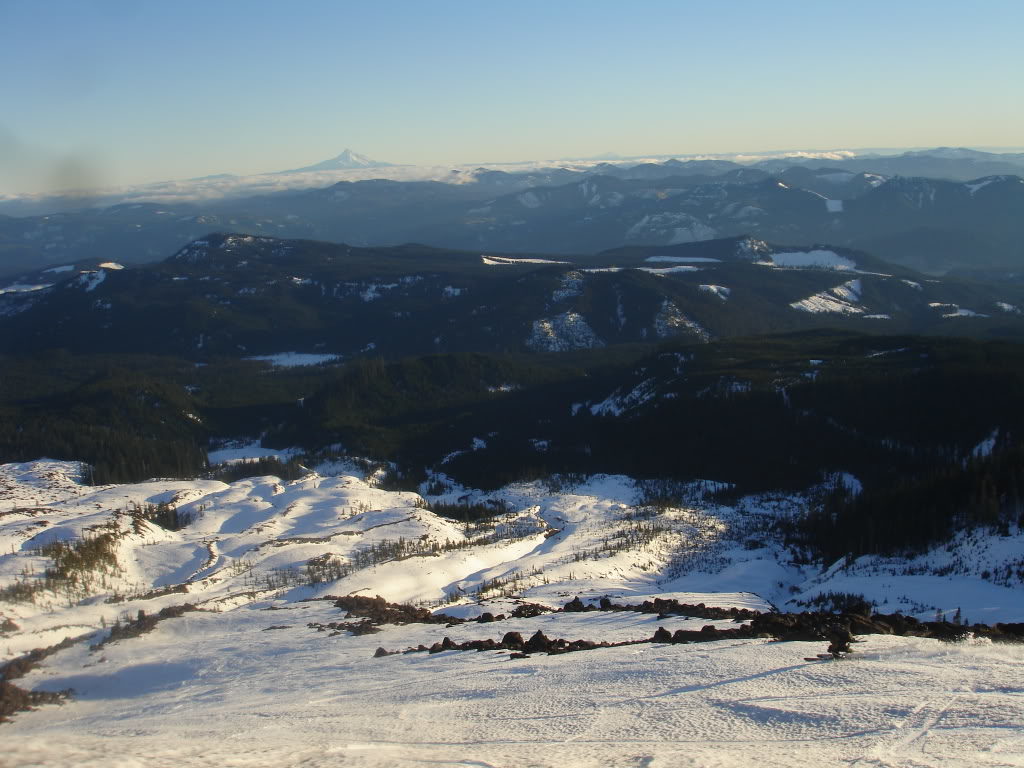
Soon enough we were at the base of the Worm Flows Route and ready to transition to skinning. The last of the light was making Mount Saint Helens glow and we were on a race against the darkness. Though conditions weren’t good at least we were able to make it to the summit. The focus of the season was on volcanoes and the first one was already ticked off the list.
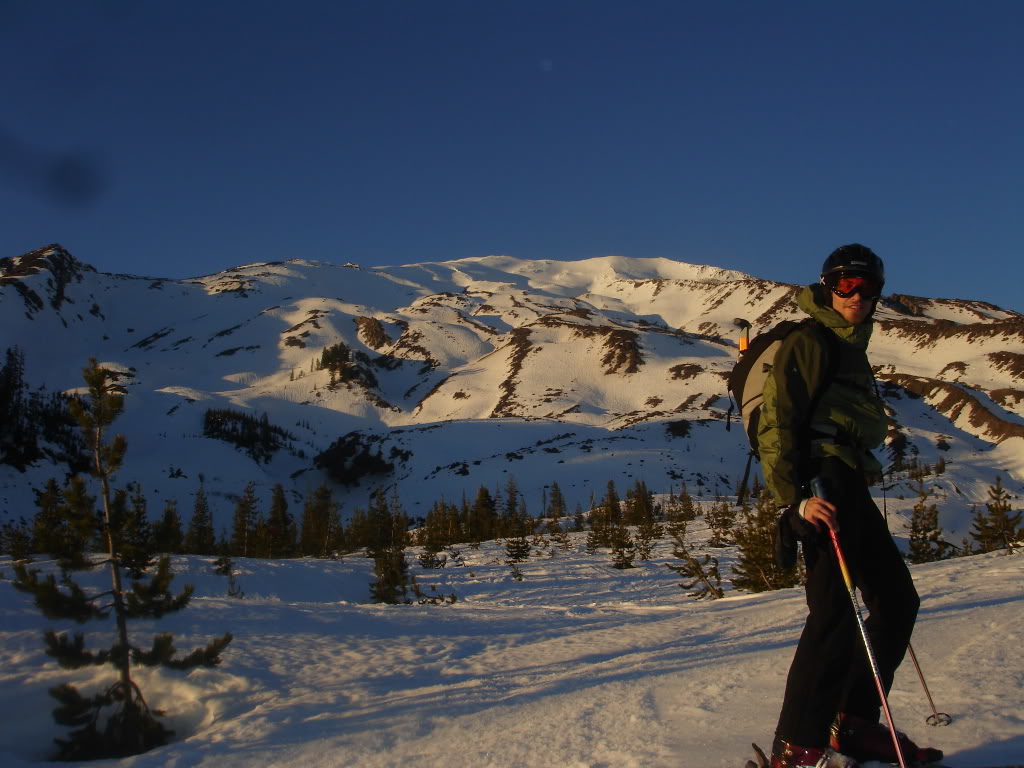
Racing the Darkness to Marble Mountain Snowpark
We raced the darkness back to the Marble Mountain Snowpark arriving minutes before dark. By now it was around 4p.m. and we still had a 3 hour drive back to town. It had been last minute plans to climb Mount Saint Helens but it was worth it for the views alone. Though there still wasn’t much snow in the Cascades hopefully soon it would change.

